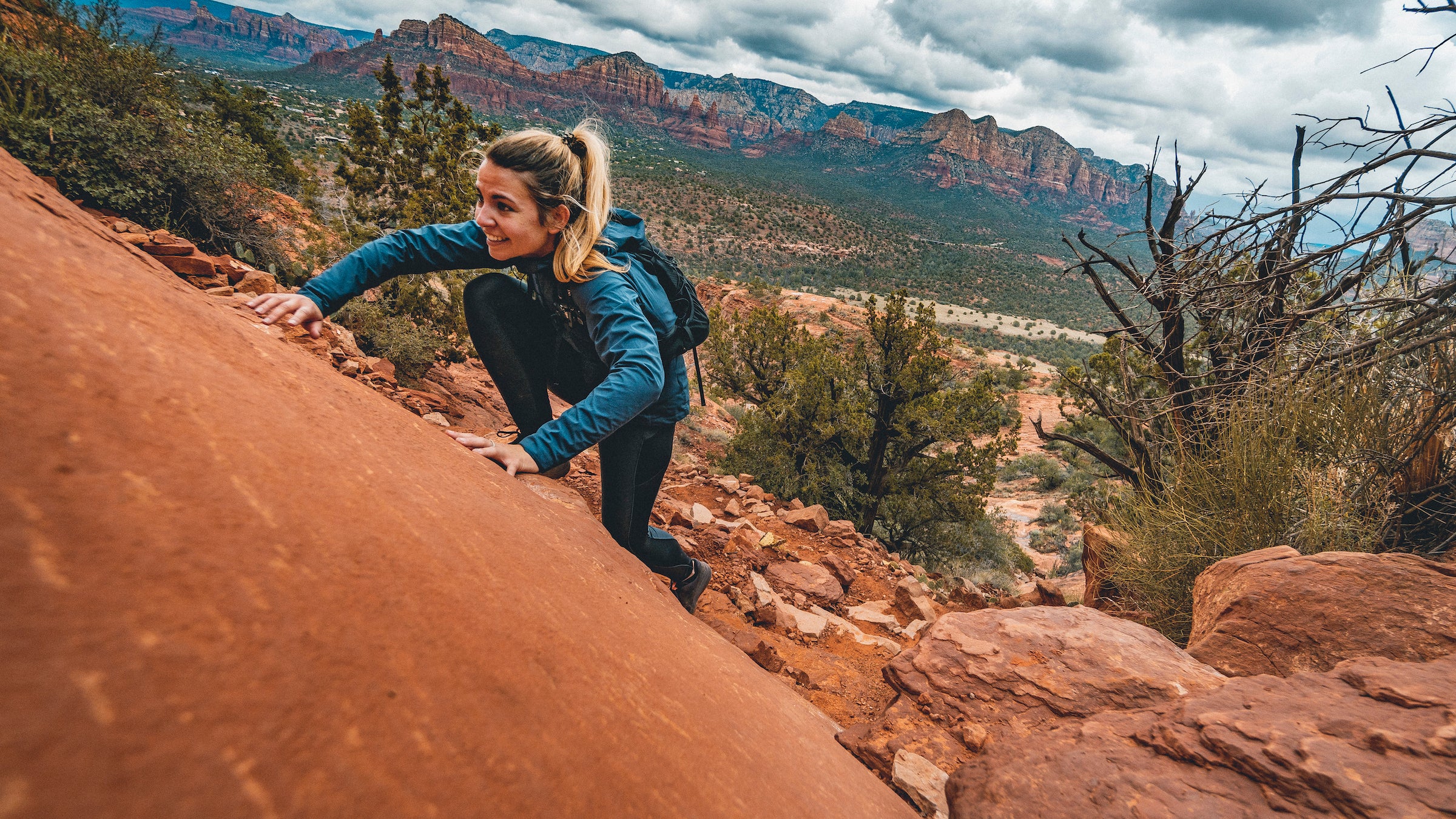Master Rocky Ascents With These 6 Steps to Safe Rock Scrambling

(Photo: Cavan Images via Getty)
Some of the best summits require a little bit of off-trail rock scrambling. In order to climb up boulders and steep, rocky sections of trail, you may need to use your hands and feet. Scrambling can be higher-consequence than regular hiking: the footing is often less secure, and a fall on exposed terrain could lead to injury. With some preparation and the right technique, you can scramble safely and level up your hiking.
If you’re new to scrambling, there are many ways to ease your way into it. Research hikes ahead of time; to begin with, seek out a trail with a short, straightforward scramble section. When you practice on low-consequence terrain, you will be able to assess your strengths and limits and eventually navigate more technical trails. With these tips, you will be able to scale any scramble that comes your way.
Keep heavy stuff close to your body.
Water bottles and sleeping pads swinging on the outside of your backpack will throw off your center of gravity. Pack with balance in mind, making sure your load is secure and you don’t have any loose straps that could cause wobble.
Put away your trekking poles.
You’ll need your hands for the ascent. Maintain three points of contact at all times on steep terrain (either two hands and one foot, or two feet and one hand). If you use vegetation as a handhold, carefully test it before committing your full weight to it.
Make sure the route is appropriate.
One of the best things you can do is know the difficulty rating of the section you are scrambling, and know if it is something you can cover confidently. All terrain can be categorized into classes from 1 to 5, with class 1 referring to flat, smooth walking and class 5 as sustained vertical rock climbing. Start with class 2, which may only require you to occasionally use a hand for balance. When you’re ready to really engage your scrambling skills, seek out class 3 terrain. Class 4 often has the potential for big falls; only try scrambling on terrain like that once you’ve had plenty of practice and are confident in your skills. Before starting a scramble, ask yourself these questions: If you encounter a tricky section, can you overcome it in just a move or two? Can you stop yourself from falling or tumbling more than a few feet if you slip? How hurt would you get if you fell?
When scrambling on unmarked terrain, take periodic checks of your surroundings.
Consult your map frequently or make sure to work toward a specific landmark. That way, if you have to backtrack, you can remember the route you took. Take your time: It is much better to move slowly and correctly than too fast and in the wrong direction.
Test each boulder before committing your full weight.
Trust the traction in your hiking boots—for extended rocky scrambles, it’s worth considering approach shoes or hiking shoes with sticky rubber soles. Maximize the friction between rubber and rock by keeping your center of gravity low, placing your foot flat with most of the rubber touching, and seeking bare, dry rock. On a more vertical climb (75 degrees or greater), keep your weight on the front of your foot and lean in toward the rock.
For the descent, take out one trekking pole to use for balance.
Shift your weight toward the slope to prevent tumbling forward. When downclimbing tricky spots, turn and face the rock for better balance. This will also prevent your pack from bumping the rock. The combination of fatigue and gravity makes going down more difficult than going up. If you’re feeling maxed out on the ascent, you’re pushing your comfort level for the descent.